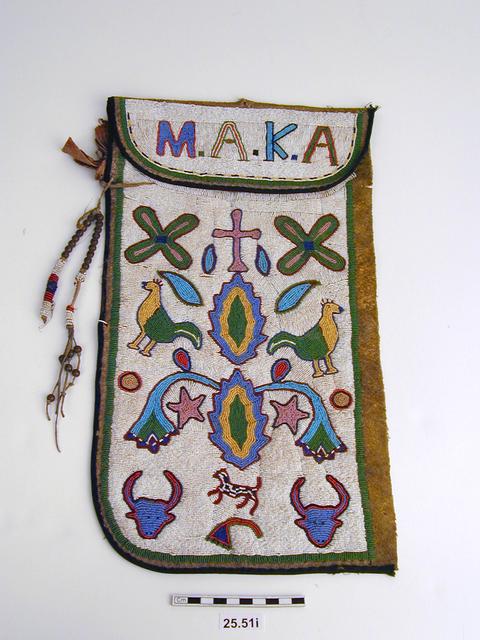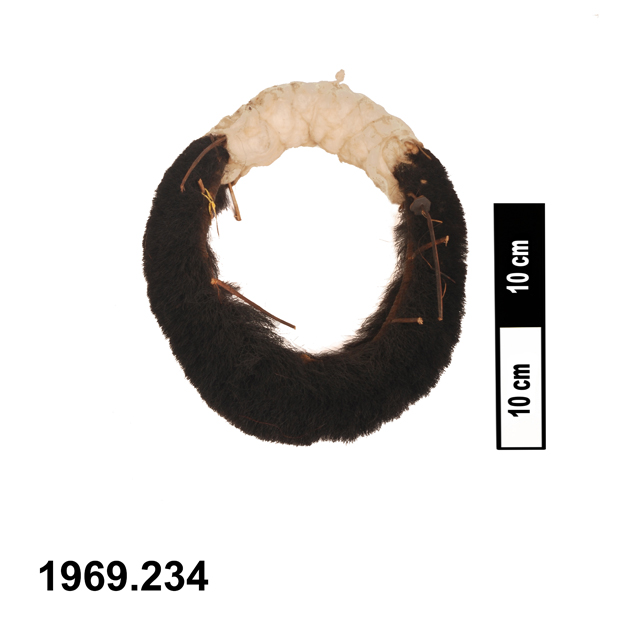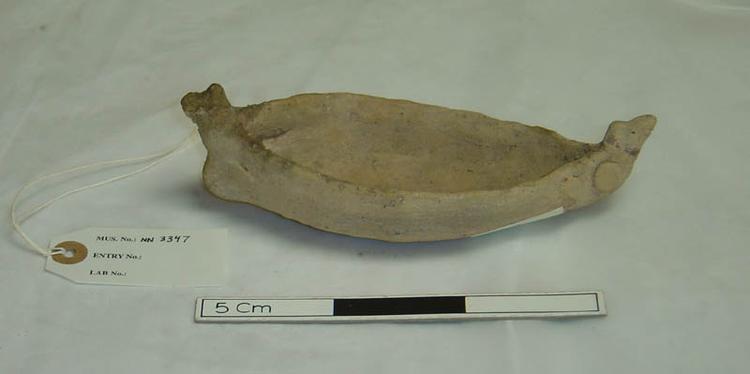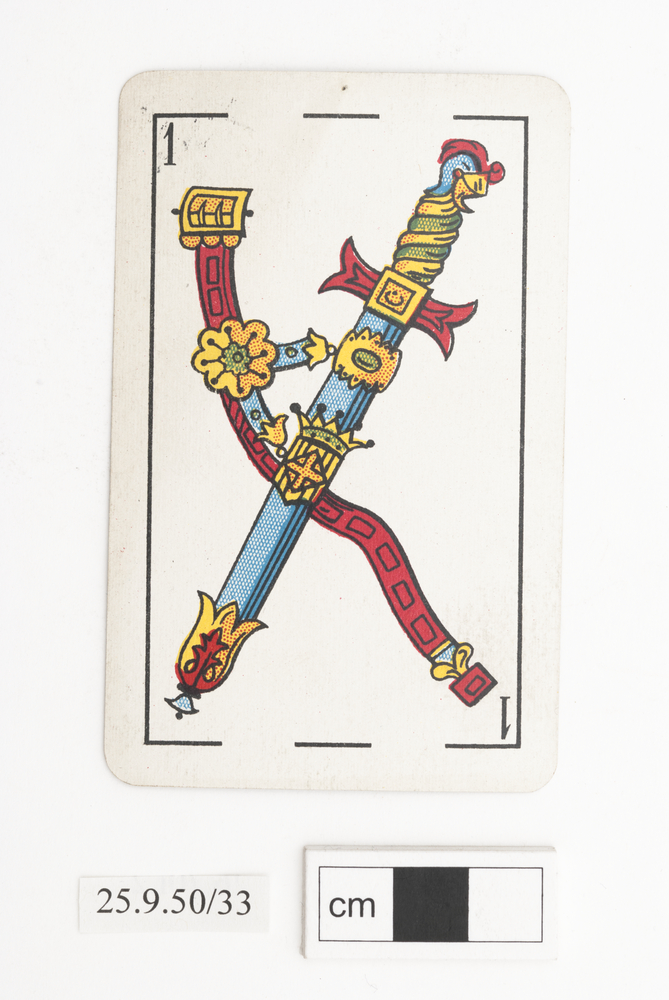
Single section of rawhide forming one side and a flap of a bag. It is decorated with polychrome beadwork depicting two birds and possibly two buffalo, heads interspersed with floral and cruciform motifs. There are two raw hide tassels with beads attached one one side. The initials 'M.A.K.A' are picked out in beadwork on the flap.
The following comments result from a research visit made by Alison Brown, Anita Herle, Alan Pard and Charlene Wolfe, to examine some of the Horniman’s Blackfoot material (5 March 2015) : These are described on the catalogue as “flaps”. We thought they may be false saddle bags. The colouring is not typically Blackfoot. Muted pink and green beads predominate. Cut glass beads like this reflect and catch light, and this affords status to the wearer. “MAKA” is beaded across the top of each one. There was considerable discussion about what this could stand for. AP and CW thought it likely that the M is the first initial and the AKA the surname [AB: Many Blackfoot names which started to be used as surnames in the later C19th/early C20th with the introduction of census records, are quite lengthy, e.g. “Across the Mountain”, “Rides at the Door” etc]. AP and CW eventually noted that there was no point in speculating whose this was, as it may have been traded into Browning and wasn’t made by or for a Blackfoot person. That said, AP noted that people in the southern part of the Blackfeet reservation were influenced by the people at Nez Perce, Rocky Boy etc, so it may show some influence from them. The flaps also show Christian influences, e.g., the use of the Cross.






